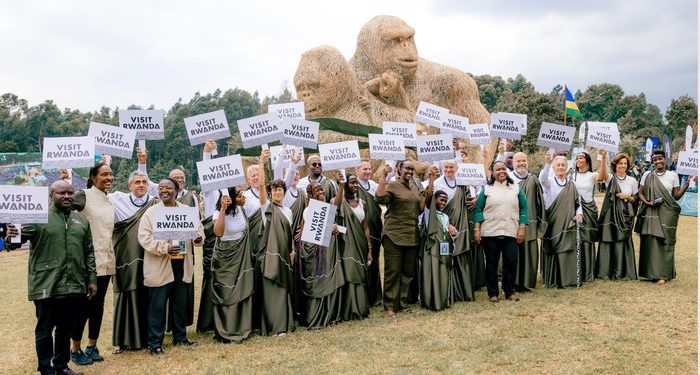The Rwanda Development Board( RDB) has officially blazoned the holdback of the largely anticipated Kwita Izina form, firstly listed for October 18, 2024. This event is devoted to naming the rearmost baby hoods born in Rwanda and is a significant highlight in the country’s wildlife conservation timetable. The advertisement was made in a statement released on Tuesday night, though the RDB did n’t give specific reasons for the holdback, leaving numerous in the conservation community and the general public curious about the decision.
The RDB has assured that a new date for the form will be blazoned in due course, emphasizing its ongoing commitment to celebrating Rwanda’s remarkable wildlife. before in September, it was bared that this time’s form would feature the picking of 22 baby hoods. The Kwita Izina form generally attracts a different array of notable personalities, including government officers, conservationists, and celebrities, all united by a common interest in wildlife conservation.
This time marks the 19th replication of the Kwita Izina form, which has gained transnational recognition for its part in promoting Rwanda’s fidelity to environmental protection and wildlife conservation. Since its commencement, a aggregate of 395 baby hoods have been named during this event, showcasing the successful conservation sweats that have allowed the mountain goon population to thrive in the tinderboxes National Park.

Traditionally held in Kinigi, Musanze District, the form is located near the tinderboxes National Park, home to the iconic mountain hoods. This graphic setting adds to the event’s appeal, as attendees are immersed in the stirring geographies that serve as the natural niche for these risked species. The form is n’t simply a festivity of the hoods; it also acts as a platform to raise mindfulness about the ongoing conservation sweats and the challenges faced by these magnific creatures.
The Kwita Izina form has come a symbol of Rwanda’s commitment to sustainable tourism and conservation. It underscores the significance of conserving the natural terrain while also furnishing profitable benefits througheco-tourism. The profit generated from goon tourism plays a pivotal part in backing conservation enterprise and supporting original communities. This connection between conservation and community weal is a core tenet of Rwanda’s approach to environmental operation.
The holdback of the form has raised questions among conservationists and the public, who eagerly look forward to the periodic event. It serves not only as a festivity but also as an important memorial of the collaborative responsibility to cover exposed species. The picking of the baby hoods is a poignant memorial of the success of conservation sweats in Rwanda, particularly after the mountain goon population was formerly critically risked.

In recent times, the Kwita Izina form has expanded its focus to include broader conversations about biodiversity and the significance of guarding colorful ecosystems within Rwanda. The event frequently features speeches from conservation leaders and exhibits innovative systems aimed at wildlife preservation. This time was anticipated to continue that trend, farther emphasizing the critical part that community engagement plays in conservation.
Despite the holdback, the RDB remains devoted to icing that the form takes place and that it continues to fulfill its charge of promoting wildlife conservation. The association is committed to maintaining a transparent line of communication with the public regarding the new date and any fresh details related to the event.
The Kwita Izina form holds great significance not only for Rwanda but also for the global conservation community. As mindfulness about environmental issues grows worldwide, events like this serve to inspire action and support for conservation sweats across different regions. The story of Rwanda’s mountain hoods is one of stopgap and adaptability, and the Kwita Izina form embodies that spirit.
As expectation builds for the tallied event, the RDB and its mates will really work diligently to insure that the form reflects the rich artistic heritage of Rwanda while pressing the critical significance of wildlife conservation. The community of conservationists, sympathizers, and suckers will continue to rally around this event, eager to recognize the newest members of the mountain goon family.
The holdback of the Kwita Izina form may be disappointing for numerous, it serves as a memorial of the significance of inflexibility in planning and the ongoing commitment to conservation. The event will continue to celebrate Rwanda’s achievements in wildlife preservation and serve as a lamp of stopgap for unborn conservation sweats. The new date for the form will be eagerly awaited as it brings the pledge of festivity, mindfulness, and renewed commitment to guarding these extraordinary brutes and their territories.



